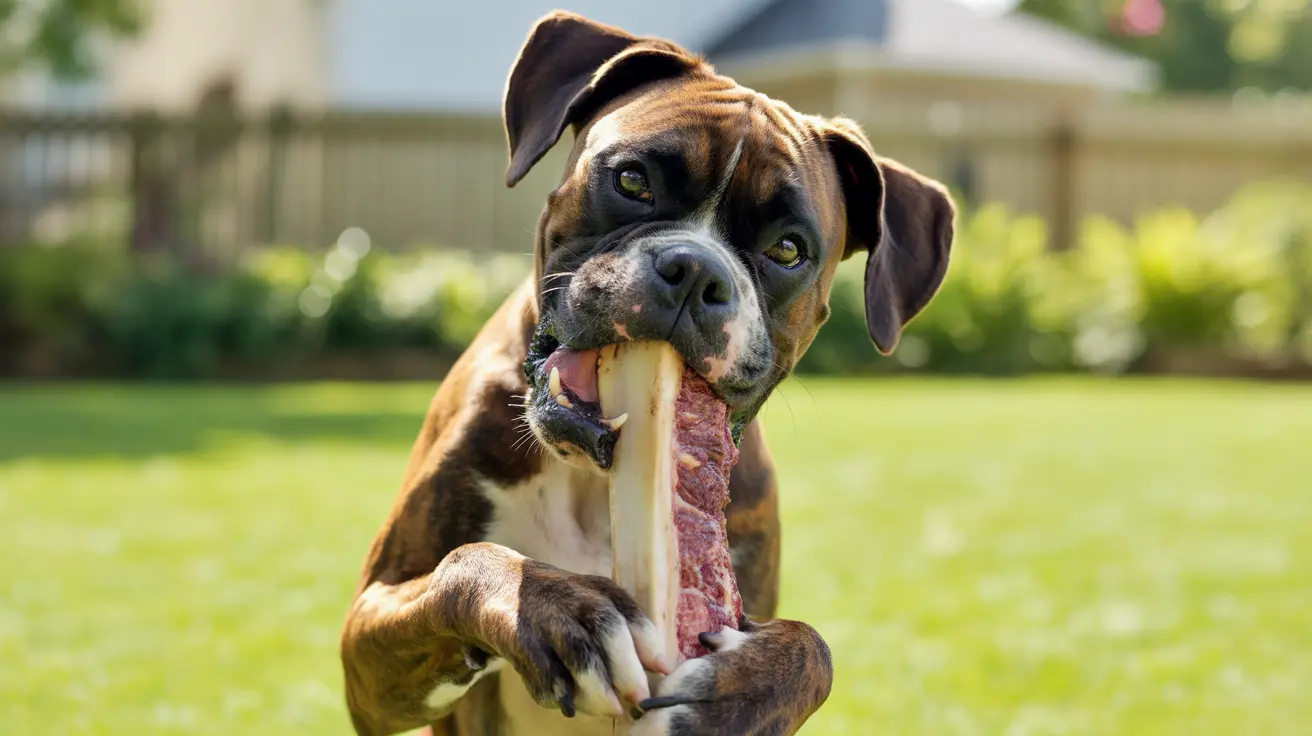The Natural Bone-Digestion Process in Dogs
Dogs possess a highly acidic stomach environment, with a pH level between 1 and 2, specifically adapted to break down animal matter, including bones. This evolutionary adaptation stems from their wolf ancestors, who regularly consumed entire prey animals, bones and all.
- Teeth break down the bone into smaller pieces
- Stomach acid starts dissolving the bone material
- Digestive enzymes work to extract nutrients
- The remaining material moves through the intestinal tract
Typical Digestion Timeline for Bones
The time it takes for a dog to digest a bone can vary significantly, but generally follows this pattern:
- Soft, raw bones: 24 hours or less
- Harder bones or larger fragments: 24-48 hours
- Some dense bones: Up to 72 hours in rare cases
Factors Affecting Digestion Speed
Several key factors influence how quickly a dog can process bones:
- Size of the dog
- Type and size of bone
- Whether the bone is raw or cooked
- The dog's overall digestive health
- Activity level and metabolism
- Age and breed of the dog
Safety Considerations and Risks
While dogs can digest certain bones, not all bones are safe for consumption. Cooked bones pose particular risks as they become brittle and can splinter, potentially causing:
- Choking hazards
- Intestinal blockages
- Perforation of the digestive tract
- Dental injuries
- Constipation
Recommended Bone Types for Dogs
If you choose to give your dog bones, stick to these safer options:
- Raw meat bones from poultry
- Soft, cartilaginous bones
- Appropriately sized bones for your dog's breed
- Bones under veterinary supervision
Monitoring Your Dog After Bone Consumption
After your dog eats a bone, watch for these signs of normal digestion:
- Regular bowel movements
- Normal activity levels
- Typical eating and drinking habits
- No signs of discomfort or distress
When to Contact Your Veterinarian
Seek immediate veterinary care if you notice:
- Vomiting or retching
- Lethargy or depression
- Loss of appetite
- Unusual bowel movements
- Signs of pain or bloating
- Difficulty defecating
Frequently Asked Questions
Can dogs safely digest raw bones, and how long does it usually take for them to pass through the digestive system?
Dogs can typically digest raw bones safely within 24-48 hours. Raw bones are softer and more digestible than cooked bones, making them a safer option when appropriately sized for your dog.
Why are cooked bones dangerous for dogs, and what health risks do they pose?
Cooked bones are dangerous because they become brittle and can splinter into sharp pieces. These fragments can cause choking, intestinal punctures, blockages, and severe internal injuries.
What types and sizes of bones are safest for dogs to chew and digest?
The safest bones are raw, appropriately sized bones from poultry or lamb. They should be larger than your dog's muzzle to prevent swallowing whole, but not so large that they can crack teeth.
What signs should I look for if my dog swallows a bone that might cause health complications?
Watch for vomiting, lethargy, loss of appetite, constipation, bloody stools, excessive drooling, or signs of pain. These symptoms could indicate serious complications requiring immediate veterinary attention.
How can I safely introduce bones into my dog's diet, and are there good alternatives to real bones?
Start with raw bones under supervision, and always choose appropriate sizes. Safe alternatives include dental chews, Kong toys, or specially designed synthetic bones. Consult your veterinarian before introducing any new chew items.
Conclusion
While dogs can digest certain bones, the process requires careful monitoring and appropriate bone selection. Understanding the digestion timeline and potential risks helps ensure your dog's safety when consuming bones. When in doubt, always consult with your veterinarian about the best options for your specific pet.






